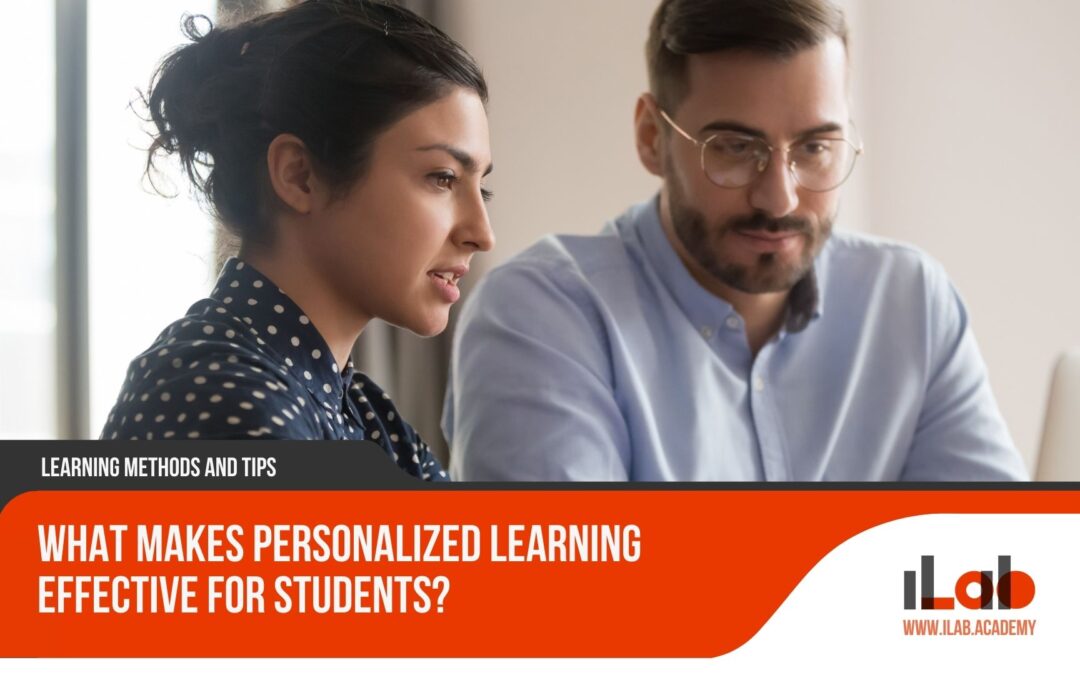Table of contents
Navigating the educational waters can be tricky, but when it comes to students with dyslexia, I’ve learned that it’s less about staying afloat and more about charting a course that honors their unique learning needs. As a teacher, I’m committed to understanding the distinct ways dyslexic learners engage with the world. In this article, I’ll share the insights and strategies I’ve gathered to create effective learning plans for these students. We’ll explore how to recognize dyslexia’s impact on learning, collaborate with families to set achievable goals, and implement instructional approaches tailored to each student’s strengths. I aim to show you that with thoughtfulness and flexibility, we can design educational experiences that empower students with dyslexia to excel.
Key Takeaways
- Dyslexia is a common learning difficulty that can affect reading, writing, and spelling.
- Understanding the individual student’s challenges is the first step to creating an effective learning plan.
- Collaborative goal setting with students and parents is crucial for creating achievable and measurable goals.
- Instructional strategies such as multisensory approaches, explicit phonics instruction, and assistive technology can benefit students with dyslexia.
Understanding Dyslexia and Its Impact on Learning
In addressing dyslexia and its impact on learning, I’ll first explain that this language-based learning difficulty primarily hinders a person’s ability to read, write, and spell effectively. Dyslexia is not a reflection of intelligence or effort; rather, it’s a unique neurological condition that affects the way the brain processes written material. As someone deeply immersed in the world of language, I understand how vital reading and writing are for academic achievement and day-to-day communication.
Typically, dyslexic students may struggle with recognizing phonemes—the smallest units of sound that make up words—which can lead to difficulties in phonics and the decoding of words. This challenge often results in reading that is slow and laborious, and spelling that may appear jumbled or incorrect. Moreover, dyslexic learners might find it tough to comprehend text, not because they can’t understand the content, but because their fluency issues prevent them from accessing the information efficiently.
Early identification of dyslexia is crucial. The sooner it’s recognized, the quicker I can intervene with appropriate support. Common signs include trouble with word recognition, poor spelling, and avoiding reading or writing tasks. It’s important not to overlook these signs as mere disinterest in learning.
Understanding the specific challenges faced by each dyslexic student is fundamental in crafting a learning plan tailored to their needs. It’s about leveraging their strengths and providing the right accommodations to help them overcome their difficulties. As we move forward, setting realistic, collaborative goals with students and parents is essential in creating a roadmap for success.
Collaborative Goal Setting with Students and Parents
A student’s active participation in setting educational goals, along with their parents’ support, is crucial in crafting a personalized learning plan that truly resonates with their aspirations. When I sit down to develop these plans, I’m not just setting objectives; I’m weaving a student’s dreams and capabilities into a roadmap for success. It’s not just about overcoming dyslexia—it’s about empowering the student to reach their full potential.
To make this process as effective as possible, here are a few key steps I always include:
- Establish Trust: I start by building a rapport with the student and their family, ensuring they feel comfortable and heard.
- Goal Discovery: Together, we explore the student’s interests and passions, which will guide the goal-setting process.
- Realistic Milestones: We set achievable and measurable goals that are challenging yet attainable, to ensure progress without overwhelming the student.
- Regular Reflection: There’s a commitment to continuous feedback and adjustment, so the learning plan stays relevant and responsive to the student’s growth.
This collaborative approach ensures that goals aren’t just imposed but are embraced by the student. They’re more likely to be motivated when they see their own desires reflected in the learning objectives. And let’s not forget the parents—they bring a unique understanding of their child’s needs and are essential in providing the support system that’s necessary for success.
Individualized Instructional Strategies
While setting collaborative goals is foundational, I also prioritize tailoring instructional strategies to each student’s unique learning profile, ensuring their dyslexia is addressed effectively. This personalization is key to overcoming the hurdles that dyslexia presents in reading, writing, and spelling.
Multisensory approaches are particularly beneficial, as they engage more than one sense at a time, helping to reinforce learning. For instance, I might incorporate visual aids, tactile activities, and auditory feedback in a lesson on phonics. This not only aids in retention but also makes the learning experience more dynamic and engaging.
Explicit phonics instruction is another cornerstone of my approach. It’s critical to break down the components of language in a clear and systematic way. By focusing on the relationships between sounds and their corresponding letters, I can help students develop stronger decoding skills. This strategy can be individualized by adjusting the pace based on the student’s progress or by emphasizing particular sounds that a student finds challenging.
I also make significant use of assistive technology. Tools such as text-to-speech software and spell checkers can be game-changers for students with dyslexia. They offer independence and can significantly reduce the frustration associated with reading and writing tasks. In each student’s learning plan, I consider which technological aids will be most effective based on their specific needs and preferences.
Accommodations and Modifications
Beyond individualized instructional strategies, I’ve found that the inclusion of specific accommodations and modifications within learning plans can significantly support students with dyslexia. These adjustments are tailored to alleviate the particular challenges these students face, enabling them to access the curriculum on a more equal footing with their peers.
Accommodations generally refer to changes that allow students to demonstrate what they know without fundamentally altering the instructional level, content, or performance criteria. For instance:
- Extended time on tests allows students with processing difficulties to demonstrate their understanding without the pressure of a ticking clock.
- Oral exams can be an alternative assessment method, particularly beneficial for those who articulate their knowledge better verbally than in written form.
- Audio books ensure that students with reading challenges can still experience the richness of literature and absorb information.
- Preferential seating near the teacher can help reduce distractions and facilitate clearer communication.
On the other hand, modifications usually involve altering the educational expectations or materials for a student. These might include:
- Simplified instructions break down complex tasks into manageable steps, fostering independence and confidence.
- Alternative assignments that cater to a student’s strengths can showcase their understanding without penalizing them for their dyslexia.
- Use of graphic organizers can help students plan and organize their thoughts visually, which is often more intuitive for them.
- Word banks provide a reference that can help reduce the cognitive load during writing tasks.
It’s important to remember that these accommodations and modifications are not about making learning easier, but about making it accessible. They are vital tools that help level the playing field for students with dyslexia, allowing them to showcase their true potential.
Fostering a Supportive Classroom Environment
I’ve discovered that nurturing a supportive classroom environment is pivotal for the academic and social success of students with dyslexia. A tolerant and nurturing community within the classroom can significantly reduce the stigma these students often face. It’s about fostering an atmosphere of understanding and acceptance among all students. By promoting this kind of inclusive culture, where diverse learning profiles are celebrated, we can make a profound difference in the lives of students with dyslexia.
To achieve this, I focus on implementing techniques that encourage peer support and collaboration. For instance, group work that leverages the strengths of each student can build a sense of team spirit and showcase the unique contributions of those with dyslexia. Additionally, educating the entire class about dyslexia helps demystify the challenges these students encounter and cultivates empathy.
Creating an inclusive environment also involves adapting teaching methods to suit various learning styles. This means using visual aids, hands-on activities, and technology that support different ways of processing information. When students see that everyone’s learning needs are addressed, it sets a powerful example that differences are not only acknowledged but also respected and accommodated.
I continuously strive to create a space where every student feels safe to express themselves and is confident that their voice will be heard. It’s about more than just academic support; it’s about building an empathetic community that stands against the isolation often felt by those with learning differences. In such an environment, students with dyslexia can truly thrive.
Integrating Technology and Resources
Incorporating various technological tools is essential in creating personalized learning plans that cater to the needs of students with dyslexia. As an educator passionate about language and learning, I’ve seen firsthand how technology can bridge gaps in traditional teaching methods. For dyslexic students, the right digital resources can transform their educational experience.
Text-to-speech software, for instance, allows students to hear written content, aiding comprehension and reducing the strain of decoding words. This auditory support is especially helpful when tackling new or complex texts. Spell checkers offer another layer of assistance, helping students correct their work independently, thus bolstering their confidence in writing.
Audiobooks are a game-changer for accessing literature without the hurdle of decoding. Students can enjoy stories and gather information without the stress that reading might typically provoke. And let’s not overlook other digital tools designed to support learning differences:
- Visual reading aids: Tools like colored overlays for screens can reduce visual stress often experienced by dyslexic learners.
- Organizational apps: These can help students manage their assignments and time, which is often a challenge.
- Note-taking software: Such programs can transcribe spoken language into text, aiding those who struggle with writing.
- Interactive educational games: These make learning fun and engaging, reinforcing concepts through play.
Seamlessly integrating these resources into a learning plan isn’t just about compensating for difficulties; it’s about empowering students to engage with content on their terms. It’s my commitment to ensure these tools are not only available but also tailored to each student’s unique needs, making the learning journey as enriching and accessible as possible.
Continuous Assessment and Adaptation
As we hone in on the learning plans for students with dyslexia, I’m constantly reassessing the methods and tools we use to ensure they effectively meet each student’s growing needs. It’s a dynamic process, not a static one. Children change, and so should our approaches. Continuous assessment means regularly checking in with the students, not just academically, but also emotionally and socially. It’s about observing, listening, and gathering feedback to tweak the learning plan as we go along.
I’ve found that regular, informal assessments can be just as revealing as formal ones. They don’t need to be daunting tests but can instead be reflective discussions or practical demonstrations of skills. These help me understand what’s working and what’s not. Maybe a particular reading app isn’t resonating with a student, or perhaps they need more time with phonics. It’s my job to catch these signals and adapt accordingly.
Flexibility is key. I’m always ready to modify goals and strategies to align with the student’s development and self-discovery. If I notice a student’s interest in a specific subject sparking, I’ll integrate that into their learning to bolster engagement and success. And when they face setbacks, I’m there to help them navigate through, adjusting the plan to better suit their learning style.
In essence, I’m an educational tailor, constantly measuring and altering the learning garment to fit the growing child. The beauty of this approach is that it’s not just about overcoming challenges; it’s about empowering students with dyslexia to become active participants in their education, shaping their learning journey with confidence and resilience.
Building Self-Confidence and Advocacy Skills
Fostering self-confidence and teaching advocacy skills, I find it crucial to integrate these elements into learning plans for students with dyslexia. These students often face unique challenges that can impact their belief in their own abilities. By instilling a sense of self-worth and empowering them to speak up for their needs, we lay a foundation not just for academic success, but for lifelong resilience.
To make this process more relatable and enjoyable, I’d like to share a few strategies I use:
- Celebrate Small Wins: I highlight each student’s progress, no matter how small. This reinforces their sense of achievement and motivates them to keep pushing forward.
- Role-Playing Scenarios: I engage students in role-playing exercises where they practice how to articulate their needs to teachers and peers. It’s a fun way to build assertiveness.
- Positive Affirmations: I encourage students to use positive affirmations that promote a growth mindset. Phrases like “I am capable” and “I can improve with practice” become part of our daily routine.
- Peer Support: I facilitate buddy systems where students can support and learn from each other, fostering a community of mutual encouragement.
Building advocacy skills means teaching students to understand their learning differences and to communicate their needs effectively. It’s about helping them recognize when they might need extra help and how to ask for it. This isn’t just beneficial for their school years; it’s a vital skill that will serve them well throughout their lives. In my approach, I ensure that students know their voices are heard and their challenges are understood, helping them to navigate their educational journey with confidence and self-awareness.
Frequently Asked Questions
How Can Extracurricular Activities Be Tailored to Support Students With Dyslexia in Enhancing Their Learning Experience Outside the Classroom?
I’d look at extracurriculars as a way to boost learning indirectly. For example, I might join a drama club to improve my reading and speech fluently. Activities like art can reduce stress, and team sports can enhance communication skills. I’d choose ones that play to my strengths and interests, making sure they’re fun and not just another classroom. It’s about finding balance and growing skills without the pressure of grades.
What Specific Training Should Educators Undergo to Effectively Support and Understand the Needs of Students With Dyslexia?
I believe educators should undergo comprehensive training in dyslexia, covering its neurological basis, symptom recognition, and tailored teaching strategies. This includes learning multisensory instruction techniques and understanding how to use assistive technologies. It’s crucial that I, as a teacher, am equipped to foster a supportive classroom environment that recognizes each student’s unique learning needs, ensuring their success and boosting their confidence. Continuous professional development is key to this process.
How Can Schools Involve Peers in the Support Process to Foster a More Inclusive Community for Students With Dyslexia?
I’m exploring how schools can engage classmates in creating an inclusive atmosphere for those with learning differences. It’s about fostering empathy and cooperation. I’d advocate for peer-mentoring programs and inclusive group activities. These can break down barriers and build understanding. By involving students in awareness campaigns, they learn the value of diversity. It’s crucial to encourage open discussions, ensuring that everyone feels valued and supported, regardless of their learning abilities.
What Are Some Common Misconceptions About Dyslexia That Teachers, Parents, and Students Should Be Aware of to Avoid Unintentional Stigma?
I’ve noticed many misunderstand dyslexia as a sign of low intelligence or laziness, but that’s far from true. It’s actually a specific learning issue with language processing. People often think dyslexic individuals can’t read at all, when in fact, they just process letters differently. It’s crucial to bust these myths because believing them can really harm a student’s self-esteem and progress. We need to spread awareness and understanding instead.
How Can Transitions (E.G., From Elementary to Middle School, or Middle to High School) Be Managed in the Learning Plan to Ensure Consistency in Support for Students With Dyslexia?
I’m looking at how to smooth out transitions for students, like moving from elementary to middle school. It’s key to maintain consistent support during these changes. I’ll ensure my plan adapts to new environments while keeping familiar strategies in place. That way, I can provide a stable foundation for them to build on, regardless of the academic shifts they face. It’s all about continuity and careful planning.
Conclusion
In conclusion, I’ve learned that when we embrace the unique ways our dyslexic students process language, and when we tailor our teaching to fit their needs, they don’t just keep pace—they soar. Through partnership, individualized strategies, and a nurturing classroom, we can turn challenges into triumphs. Let’s continue to adapt, integrate tech, and build their confidence. Together, we’ll ensure our dyslexic learners not only succeed but also recognize the strengths within their differences.














